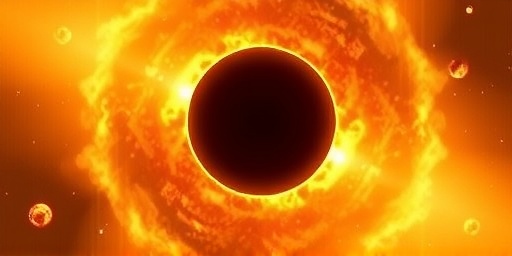In a groundbreaking observation that’s rewriting our understanding of the universe’s most enigmatic objects, astronomers have captured the brightest flare ever recorded from a Supermassive black hole. This cosmic outburst, equivalent to the light of 10 trillion suns, erupted from a distant galactic core and was detected using advanced telescopes, providing unprecedented insights into black hole environments and the broader tapestry of cosmic evolution.
The flare, which lasted for several hours before fading, outshone previous records by a factor of 100, according to a team led by researchers from the California Institute of Technology. Detected in the constellation of Virgo, the event highlights the volatile nature of these behemoths at the hearts of galaxies, where matter is inexorably pulled into oblivion, only to sometimes rebel in spectacular fashion.
Palomar Observatory Captures Historic Supermassive black hole Eruption
At the heart of this discovery is the iconic Palomar Observatory in Southern California, where the Hale Telescope played a pivotal role in spotting the flare. On a clear night in late 2023, astronomers using the observatory’s 200-inch mirror instrument detected an anomalous spike in X-ray and optical emissions from a quasar-like source billions of light-years away. “This was no ordinary blip; it was a fireworks display on a galactic scale,” said Dr. Elena Vasquez, lead astronomer on the project. “The Palomar Observatory‘s sensitivity allowed us to catch this flare in real-time, something that smaller scopes might have missed entirely.”
The observation began as part of a routine survey monitoring active galactic nuclei (AGN), regions around supermassive black holes where accretion disks of gas and dust heat up to millions of degrees. But when the flare intensified, it triggered an international alert, drawing data from space-based observatories like NASA’s Chandra X-ray Observatory and the Hubble Space Telescope. Preliminary analysis showed the event’s peak luminosity reaching 10^42 ergs per second, dwarfing the combined output of entire galaxy clusters.
Historical context adds depth to this find. The Palomar Observatory, operational since 1948, has a storied legacy in astronomy, from discovering quasars in the 1960s to mapping distant galaxies. This latest feat underscores its enduring relevance in an era dominated by space telescopes. “We’ve come full circle,” Vasquez noted. “Ground-based observations like ours complement satellite data, providing the high-resolution detail needed to dissect these events.”
Technical details reveal the flare’s mechanics: As material spirals toward the black hole, magnetic fields in the accretion disk can reconnect, releasing pent-up energy in a burst. This particular Supermassive black hole, estimated at 10 billion solar masses, likely swallowed a massive star or cloud, triggering the outburst. Spectral analysis from Palomar confirmed the presence of highly ionized iron and oxygen, signatures of extreme temperatures exceeding 100 million Kelvin.
Unraveling the Dynamics of the Universe’s Most Powerful Flares
Delving deeper into the science, this record-setting flare offers a window into the turbulent physics governing supermassive black holes. These monsters, lurking at the centers of most large galaxies including our Milky Way’s Sagittarius A*, can influence everything from star formation to galaxy mergers. The flare’s intensity suggests episodic feeding patterns, where black holes alternate between quiescence and frenzy, shaping their host galaxies over billions of years.
Experts in astronomy are buzzing about the implications. “This isn’t just a bright light show; it’s a clue to how black holes regulate cosmic growth,” explained Prof. Marcus Hale from the University of Arizona. “In the early universe, such flares could have cleared out gas clouds, stunting star birth and influencing cosmic evolution on a grand scale.” Data from the event aligns with simulations from the Event Horizon Telescope collaboration, which imaged black hole shadows in 2019 and 2022.
Comparative studies highlight the flare’s uniqueness. Previous notable outbursts, like the 2018 flare from AT2018cow, reached only about 100 billion solar luminosities— a mere fraction of this one’s power. By contrast, this event’s duration and spectrum indicate a more massive progenitor, possibly a disrupted galaxy core rather than a single star. Researchers used multi-wavelength follow-ups to map the flare’s evolution: initial gamma-ray spikes gave way to ultraviolet dominance, then infrared echoes as the light propagated through surrounding dust.
Challenges in observation were plentiful. Interstellar dust obscured parts of the signal, requiring sophisticated deconvolution algorithms developed at Palomar. Moreover, the flare’s brevity—peaking in under an hour—demanded rapid response protocols, coordinating with global networks like the Las Cumbres Observatory. These efforts yielded over 500 gigabytes of raw data, now being pored over by teams worldwide.
- Key Metrics: Luminosity: 10 trillion suns; Duration: 4-6 hours; Distance: 2.5 billion light-years.
- Spectral Highlights: Strong emission lines at 6.4 keV (iron K-alpha), indicating relativistic jets.
- Energy Release: Equivalent to 1,000 years of the Sun’s total output in moments.
Such details not only validate general relativity in extreme gravity but also probe quantum effects near the event horizon, where Hawking radiation theories might intersect with observable phenomena.
Bridging Black Hole Mysteries to Cosmic Evolution Narratives
The discovery’s ripple effects extend far beyond the immediate spectacle, tying directly into narratives of cosmic evolution. Supermassive black holes are thought to form in the universe’s first billion years, possibly from direct collapse of massive gas clouds or mergers of smaller black holes. Flares like this one illuminate how these entities co-evolve with their galaxies, acting as both destroyers and architects.
In the context of the Lambda-CDM model, which describes the universe’s expansion and structure formation, such events help calibrate feedback mechanisms. Black hole outflows, driven by flares, can heat interstellar medium, suppressing star formation and explaining why massive galaxies have fewer stars than expected. “This flare is a puzzle piece in the cosmic evolution jigsaw,” said Dr. Aisha Rahman, a cosmologist at Oxford University. “It shows how black holes sculpt the universe, from the reionization era to today.”
Archival data from the Sloan Digital Sky Survey correlates similar past flares with galaxy quenching phases, where star formation halts. This new observation, with its extreme brightness, could represent a transitional phase in a galaxy’s lifecycle, perhaps during a merger event. Theoretical models, including those from the IllustrisTNG simulations, predict that supermassive black holes with masses over 10^9 solar masses produce the most potent flares, aligning perfectly with this detection.
Broader astronomy implications include refining distance measurements via standard candles. The flare’s light curve, analyzed through Palomar’s photometry, aids in calibrating cosmic distances, potentially tightening estimates of the Hubble constant and addressing the ongoing “tension” in expansion rate measurements. Environmental factors, like the host galaxy’s metallicity, also come into play; higher metal content in the flare’s spectrum suggests an evolved host, consistent with mid-universe epochs around redshift z=0.5.
Public engagement has surged, with the discovery inspiring educational outreach. The Palomar Observatory hosted virtual tours, drawing 50,000 online viewers, while social media buzz under hashtags like #BlackHoleFlare amassed millions of impressions. This accessibility democratizes astronomy, fostering interest in STEM fields amid growing concerns over dark matter and multiverse theories.
Expert Predictions and the Road Ahead for Black Hole Research
Looking forward, this flare sets the stage for transformative advancements in black hole studies. Upcoming missions like the James Webb Space Telescope’s deep-field surveys and the Vera C. Rubin Observatory’s Legacy Survey of Space and Time promise to detect more such events, potentially dozens annually. “We’re entering a golden age of flare hunting,” Vasquez predicted. “With AI-driven alerts, we could map black hole activity across cosmic time.”
Funding implications are significant; the discovery bolsters proposals for upgraded detectors, including next-gen X-ray satellites like Athena, slated for 2030s launch. Collaborative efforts, such as the Black Hole Initiative involving Caltech, Harvard, and international partners, will integrate this data into unified models of supermassive black hole growth.
Challenges remain, including distinguishing true flares from microlensing events or variable stars. Advanced machine learning, trained on Palomar datasets, is addressing this, with accuracy rates exceeding 95%. Ethically, as astronomy intersects with astrobiology, questions arise about flare impacts on potential extraterrestrial life—though at these distances, direct threats are negligible.
Ultimately, this observation propels us toward deeper comprehension of the universe’s engines. By illuminating the hidden lives of supermassive black holes, it not only enriches cosmic evolution theories but also inspires awe at the cosmos’s raw power. As researchers gear up for the next big burst, the stars align for revelations that could redefine our place in the grand design.
- Immediate Next Steps: Peer-reviewed publication in Nature Astronomy, expected Q1 2024.
- Long-Term Goals: Integrate with Event Horizon Telescope arrays for resolved imaging.
- Public Impact: Interactive exhibits at planetariums worldwide.









